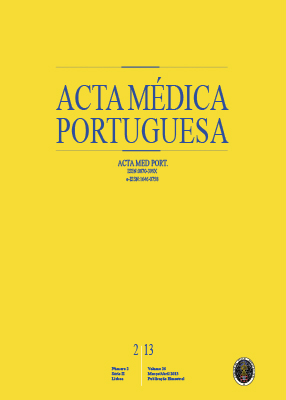Esophageal Perforation in Children: A Review of one Pediatric Surgery Institution’s Experience (16 Years)
DOI:
https://doi.org/10.20344/amp.4101Abstract
Introduction: The objective of the study was to evaluate the experience of our service in the treatment of esophageal perforations. Materials and Methods: Retrospective chart review of the nine cases occurred between January 1, 1996 and December 31, 2011. Seven occurred after accidental ingestion of foreign bodies and in two patients were iatrogenic lesions after esophagoscopy with dilation: a peptic stricture in one case and in the other stenosis of the esophageal anastomosis in a child operated for esophageal atresia. Results: In 78% of cases the initial approach was medical, with healing of the perforation confirmed on average after 20 days, 22% of patients (2 cases) underwent surgery without success, one of them healed without sequelae having nothing by mouth and medical therapy, in the other case there was a need for further colon esophagoplasty. There was no mortality. Discussion: Esophageal perforation is one of the most serious injuries of the alimentary tract, continues to be devastating, and difficult to diagnosis and treatment. The recognition of this complication is critical for a successful treatment. Conclusions: The delay of the diagnosis is associated with a mortality which can oscillate between 20 and 40%.
Downloads
Downloads
How to Cite
Issue
Section
License
All the articles published in the AMP are open access and comply with the requirements of funding agencies or academic institutions. The AMP is governed by the terms of the Creative Commons ‘Attribution – Non-Commercial Use - (CC-BY-NC)’ license, regarding the use by third parties.
It is the author’s responsibility to obtain approval for the reproduction of figures, tables, etc. from other publications.
Upon acceptance of an article for publication, the authors will be asked to complete the ICMJE “Copyright Liability and Copyright Sharing Statement “(http://www.actamedicaportuguesa.com/info/AMP-NormasPublicacao.pdf) and the “Declaration of Potential Conflicts of Interest” (http:// www.icmje.org/conflicts-of-interest). An e-mail will be sent to the corresponding author to acknowledge receipt of the manuscript.
After publication, the authors are authorised to make their articles available in repositories of their institutions of origin, as long as they always mention where they were published and according to the Creative Commons license.









